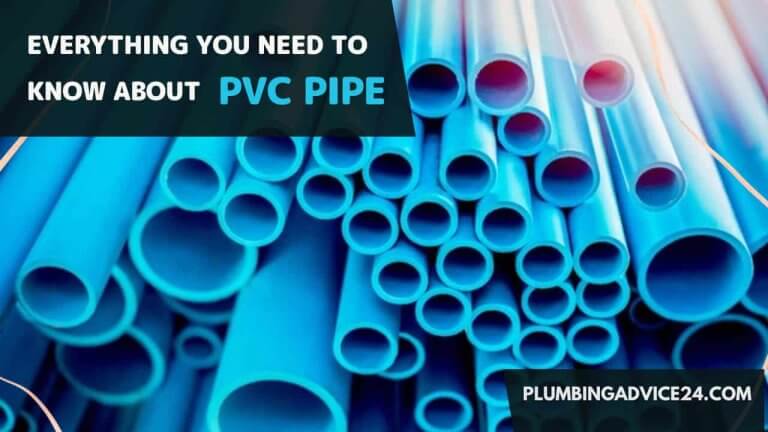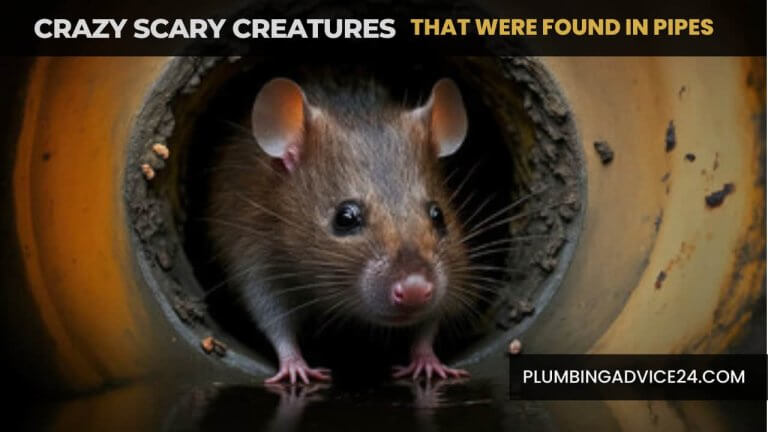12 Types of Pipe Fittings for Plumbing
Quality pipe fittings are extremely important to ensure that plumbing work is completed efficiently. Whether you are buying it for your home plumbing needs or you want to choose it for your office space, all you need to do is scroll through the available options.
What Is Pipe Fitting?
Pipe fittings are defined as piping components that are used for many purposes, such as connecting straight parts of a pipe or tube, adjusting directional changes, sizes, or shapes for branch connections, and controlling (or measuring) fluid flow.
It is used in various industries, such as waste management, manufacturing, and agriculture, as well as in safety equipment. We know we need to move content from one end to the other but do not know how to do it. Only a pipe fitter can know that and which pipe fitting is better if he has the right information.
Pipe fittings must also be of different types for different materials, such as water and air. This requires using pipes or tubes of a specific type and size.
Not many people know what type of connection is best for effective flow. All types of pipes and tubes can be connected in different ways. After the pipe is fitted, don’t assume the work is done now. If a pipe breaks, leaks, and repairs are needed.
Friends, now that we know what a pipe fitting is and why it is necessary let us now look at the types of pipe joints.
Must Read : What Is Plumbing Pipe | 22 Different Types of Plumbing pipes
How Many Types of Pipe Fitting?
When it comes to buying pipes and fittings, there are plenty of options available. Choosing the right pipe fitting type depends entirely on your project needs. To make your task easier, we have compiled a list of the most common pipe fittings available in the market.
The list of different types of pipe fittings is as follows.
- Elbow
- Tee
- Reducer
- Plug and Cap
- Coupling
- Union
- Cross
- Swage Nipple
- Olets
- Stub Ends
- Adapter
- Valve
Guys, we learned about the pipe fitting’s names and images; now, let’s learn a little more about them.
1. Elbow
The elbow is usually used to change the direction of the flow of fluid between two pipes. It is usually attached to pipes (female threads) or welded. There are usually two types of elbows,
- 90 ° Elbow
- 45 ° Elbow.
1.1. 90 ° Elbow
This is one of the most common fittings used to change direction. A 90° elbow can also be called “90 bands” or “90 EL“. It can be used to divert the flow in any direction. It can also be known as a quarter band. The 90 elbows are used in places where a major curve is needed.
This may be a requirement, affecting the flow rate and pressure inside the pipe. Like any piping system, the material under pressure hits the elbow and tends to move in the same direction. When it completes the resistance of the elbow wall, it needs to change direction at the expense of pressure. There are two types of 90 ° elbows.
- Long Radius Elbow
- Short Radius Elbow
1.1.1. Long Radius Elbow
It is the most common elbow. Its radius of curvature is 1.5 times the diameter of the pipe; If the radius of curvature is greater than 1.5 times, then the long radius elbow can also be called curvature.
This elbow is usually used when it is in a position with high pressure or a high flow rate. It is usually made of stainless steel, carbon steel, and alloy steel and is used in sewer systems, chemical, thermal, pharmaceutical, aerospace, power, paper, and other industries.
1.1.2. Short Radius Elbow
This elbow means that the radius of curvature of the elbow is equal to 1 times the diameter of the pipe or equal to the diameter of the pipe. It is usually used for low-pressure fluids or when there are some limitations regarding elbow installation. If there are no conditional limits or anything specifically marked in the contract, along radius elbow will be preferred.
1.2. 45 ° Elbow
A 45 ° elbow is also known as a “45 band” or “45 EL“. It is commonly used in pipeline networks in water supply facilities, food industries, chemical industries, electronics industries, air conditioning facilities, agricultural and horticultural production transport systems, solar energy facilities, etc.
Must Read : What is Plumbing Tools | 31 Types of Plumbing Hand Tools
2. Tee
A tee pipe fitting is used to connect three pipes either of the same or different diameters. They carry the flow from one pipe to the other in two different directions. Sometimes the current flowing from two pipes is connected to flow in one pipe. In other words, T is useful for one inlet with two outlets or two inlets with one outlet.
Tee fits are available in perpendicular or inclined directions. There are two types of tee
2.1. Equal Tee
If the diameter of the tee branch is equal to the diameter of the main pipe (Run pipe), then this tee is called Equal tee (or straight tee).
2.2 Reducing Tee
If the diameter of the branch is smaller than the main diameter, this tee is called the Reducing tee.
Must Read : What Is Plumbing Pipe Materials | What Is Used to Make Plumbing Pipes
3. Reducer
If two pipes have different diameters, the elbow connecting them is called a reducer. A reducer is mostly used to slow down the flow of fluid. The flow can also be controlled by connecting two pipes of different diameters. There are two types of reducer
- Concentric Reducer
- Eccentric Reducer
3.1. Concentric Reducer
This reducer is shaped like a cone; this type of reducer increases the pressure across the pipe due to the accumulation of air.
3.2. Eccentric Reducer
It is a reducer with one side parallel as only one side is curved. This type of fitting does not pose a risk of air accumulation.
Must Read : What Type of Piping Is Used in Homes | Types of Pipes for Water Supply
4. Plug and Cap
Plugs and caps are used to close the pipe to prevent flow during repair work. They both work similarly, but the only difference between them is that the cap is provided with female threads while the plug is provided with male threads.
Must Read : What Is Plumbing Trap | 15 Different Types of Plumbing Traps
5. Coupling
Couplings connect the two pipes in a straight line. Two pipes connected by couplings must be of equal diameter. They are soldered, welded, or attached to the ends of pipes.
It is used in long plumbing lines. For example, it is used to lay a long plumbing line and to connect another pipe when the length of one pipe is not sufficient.
They are mainly used even when there is leakage in the pipeline. There are three types of coupling,
5.1. Full Coupling
Full couplings are used to connect small bore pipes. It is used to connect a pipe, a swage, or a nipple to a pipe.
5.2. Half Coupling
Half coupling is used for small bore branches from a vessel or large bore pipe. It is threaded, or socket welded at one end only, while the other end can be welded directly into the pipe operation to make a branch connection.
5.3. Reducing Coupling
Reducing coupling is the connection of two pipes of different diameters. It connects a large-diameter pipe with a small-diameter pipe. Its function is to reduce the size of the pipe.
Must Read : 33 Different Types of Wrenches | Best Company for a Wrench
6. Union
The union is a coupling-like fitting; the only difference between the two is that the couplings are fixed once installed, while the unions are commonly threaded with pipes and can be removed if necessary. Unions are divided into three parts,
Parts of Unions
- Nut
- Female End
- Male End
Some unions have one end male threaded and one end female threaded. To make the pipe fitting work properly, both male and female ends are fastened together using nuts. Female-threaded fittings have threads on the inside of the union, while male-threaded fittings have threads on the outside of the union.
The pairing ends of the union can be replaced so that these pipe fittings can be easily replaced quickly.
Must Read : Types of PVC Pipe | What Is the Difference Between Schedule 40 and Schedule 80
7. Cross
Cross fittings are used to connect the four pipelines together. Due to the large number of pipes connected, these joints will be subject to more stress, so the cross-fitting will have to be made stronger and more durable to withstand the stress.
It is used extensively in fire sprinkler systems, as this system requires a large amount of water in all directions, and the cross meets its requirement as the cross can serve three outlets with one inlet. There are two types of cross,
7.1. Equal Cross
In the Equal cross, all 4 ends of the cross are of the same diameter.
7.2. Unequal or Reducing Cross
Unequal or Reducing cross is a type of fitting in which the four branch ends can be of different diameters.
Must Read : Different Types of PEX Pipe | How to Make PEX Connections | Types of PEX Pipe Fittings
8. Swage Nipple
Swage nipples are a type of pipe fitting used to move from one size tubing to another. The function of the swage nipples is similar to that of a reducer, the only difference being that the swage nipple is commonly used to connect a butt welded pipe to a socket welded or screwed pipe. There are two types of swage nipple,
8.1. Concentric Swage Nipple:
A concentric swage nipple is used especially for vertical pipelines.
8.2. Eccentric Swage Nipple:
Eccentric swage nipples are used especially in horizontal pipelines.
Must Read : Difference Between ABS and PVC | How to Connect ABS to PVC Pipe | Which is Better ABS or PVC Pipe
9. Olets
Olet fittings are also called branch connection fittings or outlet fittings. These fittings provide an outlet for a pipe smaller or larger in size than the larger pipe.
The pipe that gives the branch association or connection pipe is traditionally called a branch or outlet estimation. Branch connections are available in all sizes, types, bores, and various steel categories.
Types of Olets
There are fourteen types of olets:
9.1. Weldolet (Wel)
Weldolet is the most common branch butt weld connection fitting that reduces the stress concentration by sticking to the outlet pipe, which gives strength to the pipe fittings.
9.2. Threadolet (Tol)
Threadolet is a basic design similar to “weldolet.” However, this fitting differs from having a female threaded connection to connect the branch connection. It is used when screwing a connecting pipe or fitting into a branch connection.
9.3. Sockolet (Soc)
Sockolet (socket weld outlet) has the same basic design as the “weldolet” or “threadolet” but the socket has a socket for welding. It is mainly used for fitting reinforcing pipes connected by a branch pipe.
9.4. Elbolet (Elo)
Elbolet is a popular branch connection: it is made by welding the branch to the outlet of the run pipe. The edges of the elbolet are beveled to simplify the welding process, and for this reason, the elbolet belongs to the family of butt weld fittings. It is used to attach reinforced fittings.
9.5. Insert Weldolet
Insert Weldolet is another good butt-weld branch connection. It is used in less complex applications.
9.6. Branzolet
Branzolet is also a butt-weld branch connection. It is used in chemical fertilizer pipes.
9.7 Coupolet
Coupolet fittings are designed for use in fire protection sprinkler systems and other low-pressure piping applications. It is made by welding the item to the outlet of the branch run pipe. The edges of the coupolet are beveled to simplify the welding process, which is why the coupolet butt belongs to the family of weld fittings.
9.8. Nipolet
Nipolet can be used for valve take-off, gutter, vent, or tap. It has a number of branch connections fitting families.
9.9 Flexolet Butt Weld
Flexolet can reduce the number of fitting sizes. This is called flexolet butt weld, as the flexolet is joined by a butt weld.
9.10 Flexolet Socket Weld
This flexolet is called flexolet socket weld because it is connected to the socket
9.11. Flexolet Threaded
This flexolet is attached by threads which is why it is called flexolet threaded.
9.12. Latrolet (Lol)
Latrolet is similar to weldolet, which forms a 45-degree bending branch on a straight pipe run. Butt-weld latrolet can meet certain reinforcement requirements.
9.13. Sweepolet
Sweepolate is used to provide a smooth flow transition from run pipe to branch pipe. It is commonly used in large branch connections.
These butt-weld branch connections are also contoured and reinforced in an integral way to reduce stress intensity factors. This provides a less stressful solution with a longer fatigue life.
9.14. Nipoflange
Nipoflange is a welding neck flange, and it is a combination of weldolet nipple and flange. The nipoflange on the side of the run pipe is designed to be welded. So on one side of the run pipe is a branch connection welding connection, and on the other side, it has a flange connection.
Must Read : What Is a Copper Pipe | Types of Copper Pipes | Copper Pipe Cost | Size of Copper Pipe
10. Stub Ends
The stub end, which is usually the shortest length of pipe, has one end protruding while the other end is welded to the same trivial pipe or to the same wall thickness. There are two types of stub ends,
- Long Stub End
- Short Stub End
Must Read : Types of Steel Pipes | Stainless Steel Pipe Vs Carbon Steel Pipe
11. Adapter
Adapters are used to flatten the ends of pipes when they are not suitable for laying any pipe fittings or if they are not flat. It can be male-threaded or female-threaded, depending on the need. Because the other end of the adapter is plain, it can be welded or glued to the pipe ends.
Must Read : Types of Metal Pipes | Seamless Vs Welded Pipes
12. Valve
A valve is a type of pipe fitting that is very popular nowadays. It is used during repairs to prevent flow and to control liquids or gases inside the pipe.
Valves are of different types and made of different materials, with specific valves being used as required. They are identified differently, such as taps, bibs, stops, etc. Each type of valve has different advantages.
Must Read : Difference Between PVC and CPVC Pipe | Which Is Better PVC or CPVC Pipe
Uses of Pipe Fitting
- The pipe fittings run can be increased by connecting two pipes through it.
- The direction of flow can be changed by connecting the pipes through it.
- Pipe fitting is used to increase or decrease the flow as needed.
- Pipe fitting is also used to repair plumbing or to stop the flow for any reason.
- Pipe fitting is also used to transfer hazardous substances like chemicals, gas, and petrol.
- It is also needed for waste disposal.
- Pipe fitting is very useful in fire safety equipment.
- It is used in various industries like the plastics industry, chemical industry, and refinery.
Pipe Fittings Chart
Determining what size pipes you need for your project can be confusing. Many people assume pipe size is the outer diameter of the pipe, but “pipe size” actually refers to what is called “nominal diameter.”
Fittings can be just as confusing. Their inside diameters must be large enough to fit over the pipe’s outside diameter. A half-inch plastic elbow, for example, has an outside diameter of about 1-1/4 inches.
Use the pipe fittings chart below to find the nominal diameter:
| 45 ELBOWS | 90 ELBOWS | TEES | |||||||||
 |
 |
 |
|||||||||
| Size | C | Approx. Weight |
Size | A | Approx. Weight |
Size | A | Approx. Weight |
|||
| NPS | DN | NPS | DN | NPS | DN | ||||||
| 1/4 | 0.81 | 0.19 | 1/4 | 0.94 | 0.19 | 1/4 | 0.94 | 0.19 | |||
| 6 | 20.60 | 0.09 | 6 | 23.90 | 0.09 | 6 | 23.90 | 0.09 | |||
| 3/8 | 0.88 | 0.28 | 3 | 1.06 | 0.29 | 3/8 | 1.06 | 0.29 | |||
| 10 | 22.40 | 0.13 | 10 | 26.90 | 0.13 | 10 | 26.90 | 0.13 | |||
| 1/2 | 1.00 | 0.44 | 1/2 | 1.25 | 0.50 | 1/2 | 1.25 | 0.50 | |||
| 15 | 25.40 | 0.70 | 15 | 31.80 | 0.23 | 15 | 31.80 | 0.23 | |||
| 3/4 | 1.13 | 0.32 | 3/4 | 1.44 | 0.77 | 3/4 | 1.44 | 0.77 | |||
| 20 | 28.70 | 1.10 | 20 | 36.60 | 0.35 | 20 | 36.60 | 0.35 | |||
| 1 | 1.31 | 0.50 | 1 | 1.63 | 1.20 | 1 | 1.63 | 1.20 | |||
| 25 | 33.30 | 1.70 | 25 | 41.40 | 0.53 | 25 | 41.40 | 0.53 | |||
| 1 1/4 | 1.50 | 0.75 | 1 1/4 | 1.94 | 1.80 | 1 1/4 | 1.94 | 1.80 | |||
| 32 | 38.10 | 2.20 | 32 | 49.30 | 0.82 | 32 | 49.30 | 0.82 | |||
| 1 1/2 | 1.69 | 1.01 | 1 1/2 | 2.13 | 2.40 | 1 1/2 | 2.13 | 2.40 | |||
| 40 | 42.90 | 3.40 | 40 | 54.10 | 1.10 | 40 | 54.10 | 1.10 | |||
| 2 | 2.00 | 1.60 | 2 | 2.50 | 3.80 | 2 | 2.50 | 3.80 | |||
| 50 | 50.80 | 5.60 | 50 | 63.50 | 1.75 | 50 | 63.50 | 1.75 | |||
| 2 1/2 | 2.25 | 2.50 | 2 1/2 | 2.94 | 6.30 | 2 1/2 | 2.94 | 6.30 | |||
| 65 | 57.20 | 2.50 | 65 | 74.70 | 2.90 | 65 | 74.70 | 2.90 | |||
| 3 | 2.50 | 83.00 | 3 | 3.38 | 9.50 | 3 | 3.38 | 9.50 | |||
| 80 | 63.50 | 3.80 | 80 | 85,9 | 4.30 | 80 | 85,9 | 4.30 | |||
Must Read : What Is a Sewer Line | Types of Sewer Pipes | Best Sewer Line Insurance Company
What Is Pipe Fitting?
Pipe Fittings are the piping components that help pipe routing for directional changes, size changes, and branch connections. Pipes and tubes are required for a variety of reasons. This necessitates pipe fitting in various industries such as waste management, agriculture, and manufacturing.
Why Is Pipe Fitting Necessary?
Pipe fittings are defined as piping components. They are used for many purposes, such as connecting straight parts of a pipe or tube, adjusting directional changes, sizes or shapes, for branch connections, and controlling (or measuring) fluid flow. It is also used in different industries like waste management, manufacturing, and agriculture.
What Is an Eccentric Reducer?
The eccentric reducer is parallel on one side and curved on the other. An eccentric reducer-type pipe fitting is produced with a slight outlet in the middle up to the large end. This allows it to connect to one side of the inlet. The reducer should be connected to the conventional side so that it can prevent air from deceiving at pump pressure. These eccentric pipe reducers make easy connections between pipes of different sizes.
What Is the Shape of a Concentric Reducer?
The concentric reducer is cone-shaped and is used when the diameter between the pipes changes.
What Makes a Pipe Valve Work?
The pipe valve controls the flow of liquid or gas inside the pipe. It is also useful for stopping the flow of water.
How Many Types of Stub Ends Are There?
There are two types of stub ends.
- Long Stub End
- Short Stub End
If You Liked This Post? So Share It with Your Friends
Suggested Articles:
- What Is ABS Pipe | Why Is ABS Pipe Prohibited | How to Measure ABS Pipe | ABS Pipe Installation Cost
- What Is Brass Pipe | What Is Brass Pipe Used For | How to Measure Brass Pipes
- What is Cast Iron Pipe | How to Repair Cast Iron Pipe | Cast Iron Pipe Replacement Cost
- Polypropylene Pipe | PP-R Pipe | PP Pipe Complete Guide
- Polybutylene Pipe Problems and Their Solution-Complete Guide
- Lead Pipe Poisoning Hazards and Solutions
- How Dangerous Is Asbestos Cement Pipe | Reasons for Asbestos Cement Pipe Failure
- Galvanized Pipe Problems and Replacement Cost










































